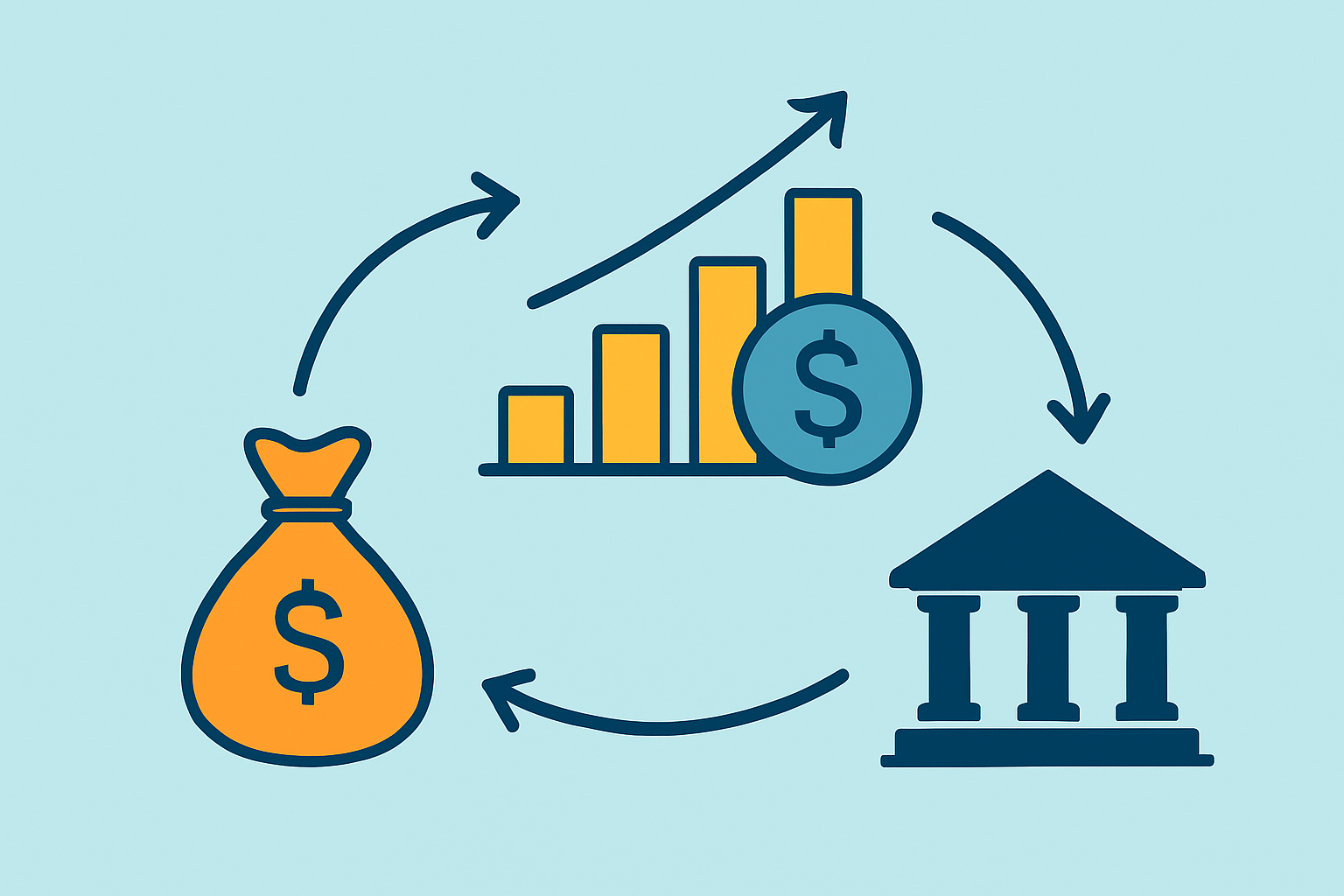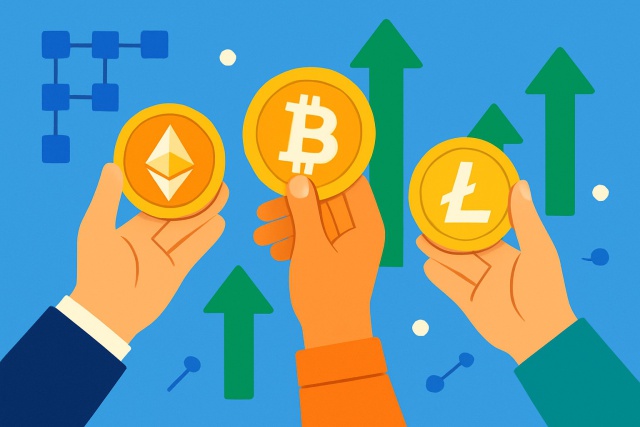What Is a Carry Trade and How It Works?


This article breaks down the ins and outs of carry trades and shows how you can put them to work in your cryptocurrency investing journey.
- Get a firsthand look at how carry trades work by borrowing currencies with low interest rates to invest in assets that promise higher returns—think of it as making your money do the heavy lifting for you.
- Dive into the origins of carry trades and discover how they have become a big deal in cryptocurrency and DeFi platforms. They are shaking things up in ways you might not expect.
- Walk through clear step-by-step methods to pull off a crypto carry trade without losing your shirt because managing risks is as important as chasing returns.
- Pick up practical tips to help you tame the wild swings of volatile markets. These tips aim to reduce risk and give your returns a nice little boost along the way.
A carry trade involves borrowing money in a currency with a low interest rate and then plowing that cash into an asset or currency that offers a higher return.
What Exactly Does Carry Trade Mean?
A carry trade is about borrowing a currency with low interest rates which means it doesn’t burn a hole in your pocket to hold onto and then putting that money into another currency or asset that offers a nicer return. The sweet spot or profit comes from pocketing the gap between those two rates.
- Borrow currency at a low interest rate to keep your borrowing costs nice and manageable.
- Take that borrowed money and put it into a currency or asset that usually delivers better returns.
- Enjoy profiting from the difference in interest rates, known as the interest rate differential—it's a classic way to make your money work a bit harder for you.
A Closer Look at the Origins and History of the Carry Trade
Carry trades got their start in the foreign exchange markets where savvy traders borrowed currencies like the Japanese yen at dirt-cheap interest rates and then invested that money into currencies offering much juicier yields. Over time this clever tactic didn’t just stick to forex. It spread into other investment areas and more recently it is been making waves in the cryptocurrency markets too.
What Actually Goes Down in a Carry Trade
The carry trade usually involves a pretty straightforward playbook that most traders get right off the bat. You start by borrowing money at a low cost—cheap as chips, really. Next, you put that cash to work by investing in assets that promise a better return. After pocketing the sweet profit from the gap between those rates, you pay back the original loan and keep whatever's left over as your reward.
Borrow money in a currency or asset that carries a low interest rate—think of it as getting a good deal on a loan.
Convert that borrowed money and invest it in a currency or asset that offers a higher return, aiming to make your money work a little harder.
Pocket the income generated from the difference in interest rates between the borrowing and investing sides—a bit like capturing the spread while no one’s watching.
Pay back the original loan and keep whatever profit’s left over, turning your strategy into a neat little win.
For example, a trader might borrow Japanese yen when interest rates are near rock bottom then swap it to Australian dollars, which usually have higher rates. The goal is to pocket the difference while cautiously watching for currency curveballs. In the crypto space, the game is similar but with a modern twist. Individuals often borrow stablecoins like USDT at bargain lending rates then lend or stake tokens like ETH or DOT on DeFi platforms that offer juicier yields or farming rewards.

Understanding the Ins and Outs of Carry Trade in Cryptocurrencies
In the ever-shifting crypto world carry trades have taken on a life of their own as they evolve alongside lending platforms, staking opportunities and the vast landscape of decentralized finance (DeFi) protocols. Investors often borrow stablecoins at surprisingly low rates then try to squeeze out higher returns by lending, staking more volatile coins or cleverly navigating yield gaps across various options.
- Borrow stablecoins like USDC or DAI at relatively low interest rates on lending platforms—it's a neat way to keep costs down without breaking a sweat.
- Lend or supply liquidity in DeFi protocols, which often dish out higher yields or farming incentives that make the effort feel worthwhile.
- Stake your cryptocurrencies to earn network rewards that comfortably outpace those pesky borrowing costs.
- Keep an eye out for arbitrage opportunities across different crypto platforms, where varying interest rates can turn into a little profit if you play your cards right.
Think of crypto carry trade as borrowing low-cost capital to fuel a system that produces greater returns—it's basically using cheaper funds to squeeze more juice out of your investments.
Understanding the Nuances and Hiccups of Carry Trades
Carry trades can be quite profitable but they’re not without risks. Currency or asset prices can swing unexpectedly and quickly wipe out any interest gains you might have been counting on. Interest rates often change without a heads-up and if you’re dabbling with leverage, losses can spiral faster than you’d like. When it comes to crypto, things get even trickier. There’s the added headache of vulnerabilities in smart contracts and liquidity issues on some platforms.
- Currency depreciation can really gnaw away at profits or, worse, lead to actual losses when it’s time to repay loans.
- Margin calls kick in if the value of collateral takes a nosedive and often leave no choice but to liquidate.
- Sudden shifts in policy or regulations tend to shake things up. They impact lending rates or the rules around how assets are used.
- Bugs lurking in smart contracts within DeFi protocols might steal funds or cause losses, a real headache.
- Liquidity shortages can make it tough to close positions swiftly and often push costs higher than anyone would like.
| Risk Type | Description | Examples in Traditional Markets | Examples in Crypto Markets |
|---|---|---|---|
| Currency Depreciation | Loss caused by unfavorable shifts in exchange rates | Borrowing JPY and holding AUD may take a hit in value | Borrowing USDT and jumping into volatile altcoins can quickly see your funds shrink |
| Margin Calls | Forced liquidation when the value of your collateral falls | Forex brokers shutting down losing positions before you can blink | DeFi lending platforms snapping up collateral when values dip unexpectedly |
| Policy Shifts | Rapid changes in monetary policies or regulations | Central banks tweaking interest rates on a dime | Regulatory clampdowns shaking up crypto lending markets and causing headaches |
| Smart Contract Bugs | Flaws in software that lead to lost funds | Not applicable | Exploits in DeFi protocols sneaking in to cause costly hacks and losses |
| Liquidity Crunches | Trouble exiting positions or converting currencies or assets | Low liquidity in emerging currency pairs can leave you stuck | Not enough liquidity to cash out staked tokens when you want out |
Who Could Really Benefit from Using Carry Trade
Carry trades usually shine brightest for seasoned investors or traders who don’t shy away from leverage risks and can stay on top of the ever-shifting market landscape.
- Investors who really get how differences in interest rates can swing both returns and risks in surprising ways.
- Traders sharp enough to keep a close watch on leverage and margin, steering clear of those nasty liquidations.
- Individuals with rock-solid risk management plans, ready to tackle volatility and those pesky curveballs that pop up out of nowhere.
- People who have access to a variety of financial and crypto products, giving them the freedom to build well-diversified carry positions without breaking a sweat.
Getting Started with Carry Trading in Cryptocurrencies A Beginner's Friendly Guide
To kick off a crypto carry trade you typically start by digging into various lending platforms and sizing up their interest rates and terms to see what’s on offer. Then comes the part where you weigh the risks carefully, borrow assets with the lowest interest rates you can find and put that money to work in ventures that promise heftier returns.
Dig into trustworthy crypto lending platforms and DeFi protocols that offer lending and staking options—think of it as your financial homework but more exciting.
Give interest rates, fees and terms a close look because peeling back these layers helps you spot the best spots for borrowing and investing without getting burned.
Weigh the risks carefully and set clear boundaries on how much exposure you’re comfortable with including stop-loss points. A little caution goes a long way in this wild west.
When borrowing, lean toward cryptocurrencies or stablecoins with low interest rates to keep your costs down. It’s like searching for the least painful loan possible.
On the flip side, lend, stake or invest in assets and protocols that usually bring higher returns but don’t forget that with great reward comes some risk.
Keep a steady eye on your positions and tweak them as the market and rates shift. Staying alert is half the battle in this game.
Key Tips and Best Practices for Success in Carry Trades A Down-to-Earth Guide
Successful carry traders usually put a big emphasis on sensible risk management, spreading their investments across a range of assets and platforms to avoid putting all their eggs in one basket. They also keep a keen eye on global financial trends—because let’s face it, those can change in the blink of an eye.
- Start off with small positions to get a genuine feel for how the mechanics play out and keep your exposure in check. There is no need to dive in headfirst.
- Spread your carry trade across a variety of currency pairs to avoid putting all your eggs in one basket or relying too heavily on a single currency or platform.
- Don’t forget to use stop-loss orders or hedging strategies because they act as your safety net against those pesky sudden downturns.
- Keep yourself in the loop about global economic trends that can shake up interest rates and currency values. It pays to stay a step ahead.
- Make it a habit to frequently review and fine-tune your carry trade positions as the market landscape twists and turns.
Frequently Asked Questions
Is a carry trade in cryptocurrencies riskier than in traditional forex markets?
Absolutely, crypto carry trades usually come with higher risk due to wild price swings, sneakier smart contract bugs and less regulatory oversight compared to forex. The potential rewards can be juicy but sudden market rollercoasters, platform security hiccups or liquidity squeezes keep the risk meter ticking up. So putting real thought into risk management is a smart move.
Can beginners try crypto carry trades, or is it only for advanced traders?
Beginners aren’t totally shut out and can dip their toes into carry trades, preferably on a small scale to start. Sticking with stablecoin pairs like lending or borrowing USDC is usually safer. If you ask me, holding off on leverage until you really get the lay of the land is wise. Wrapping your head around interest rates, platform mechanics and solid risk management is key so start small, learn the ropes and avoid throwing the kitchen sink at it.
What’s the minimum amount needed to start a crypto carry trade?
There isn’t a magic number because it depends on the platform you choose. Some DeFi protocols let you borrow or stake with as little as $50 to $100 which is pretty accessible. That said, watch out for fees like gas costs as they can eat into your profits when dealing with small sums. Larger amounts usually translate to returns that make fees feel less painful so keep that in mind when planning your capital.
How do I choose between lending, staking, or yield farming for a carry trade?
When picking among lending, staking or yield farming it’s a trade-off buffet. Lending platforms like Aave come with lower risk but offer modest yields. Staking with ETH 2.0 rewards you for helping the network but locks your funds for a while. Yield farming with LP tokens can crank up returns but beware impermanent loss. Diversifying your approach can be your best friend by balancing risk and reward in a way that suits your comfort zone.
What happens if the borrowed cryptocurrency’s value spikes during my trade?
If the price of the cryptocurrency you borrowed suddenly shoots up you might have to pay more than you expected and that can seriously cut into your profits. To avoid that surprise, some traders hedge their bets with futures or stick to borrowing stablecoins like USDT to dodge volatility. Keeping a close eye on your collateral ratios is key to avoid liquidation.
Useful Links
- Investopedia - Handy insights into financial education and trading that almost feel like having a savvy friend in your corner
- CoinDesk - Your go-to spot for the freshest crypto news and sharp analysis that helps you stay two steps ahead
- Federal Reserve Economic Data (FRED) - A treasure trove of key interest rates and economic indicators that really matter
- Binance Academy - Learning resources that demystify cryptocurrency and blockchain, making tough concepts easier on the brain
Start Your Crypto Journey with Coinbase Today
Ready to enter the cryptocurrency market but unsure where to begin? Coinbase makes buying, selling, and storing digital assets simple and secure for beginners and experts alike.








